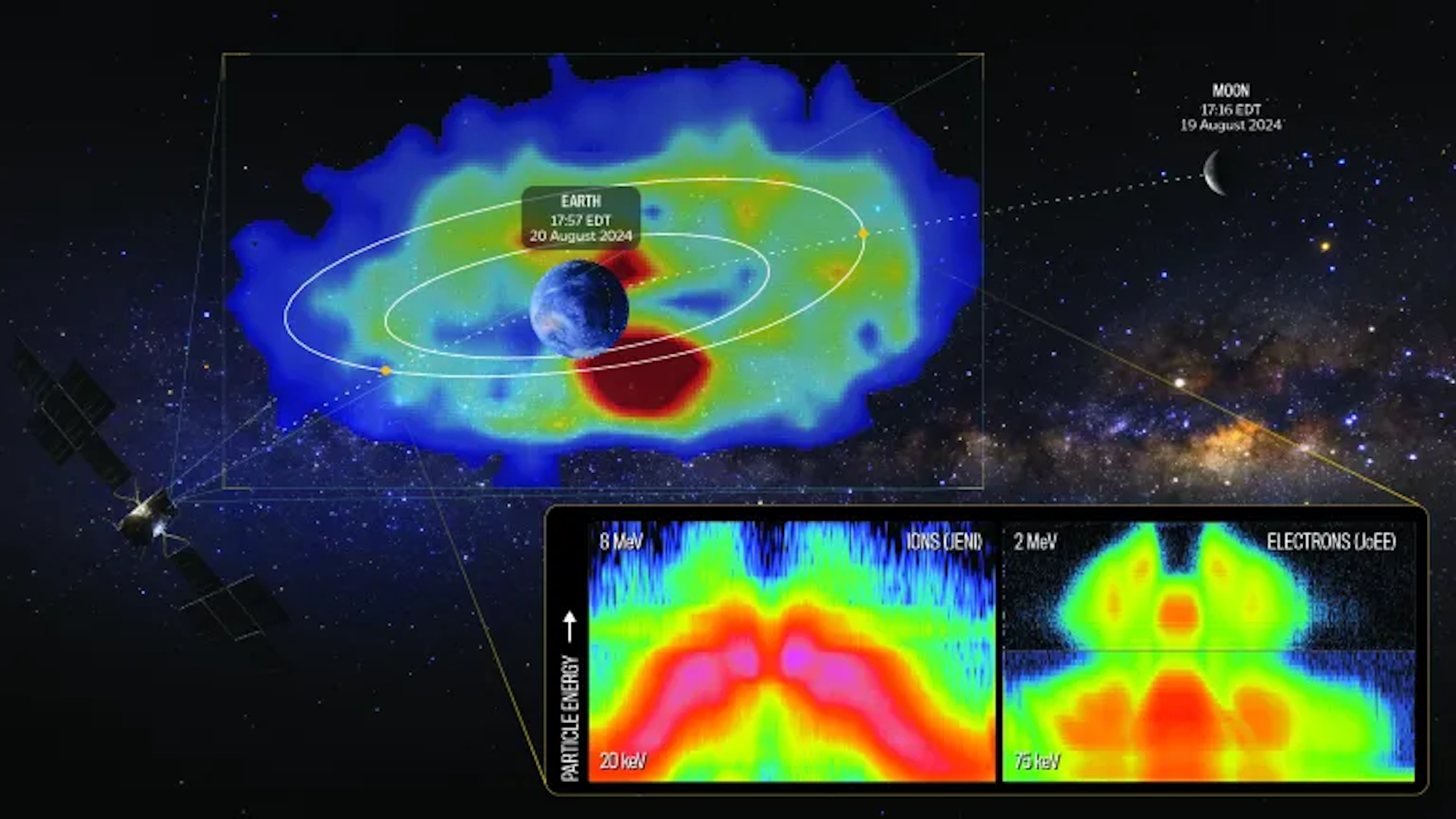

NASA has released the clearest images ever compiled of Earth’s magnetosphere radiation belt. But the spacecraft that accomplished the feat wasn’t only designed to detail the vital atmospheric region shielding the planet from harmful cosmic rays—it’s in the early stages of a multi-year journey to Jupiter.

Launched on April 14, 2023, the European Space Agency’s Jupiter Icy Moons Explorer (JUICE) probe is currently embarked on a trip to the Solar System’s largest planet. Once it finally arrives in July 2031, JUICE will analyze Jupiter’s magnetosphere while also gathering information on three of its 79 moons: Callisto, Europa, and Ganymede. Before it gets there, however, the spacecraft will need to harness multiple planets’ gravitational pulls to properly adjust its speed and trajectory. And according to NASA, engineers wanted to make the most of the first close encounter.
The agency detailed both the new images, as well as history’s first-ever lunar-Earth flyby and double gravity assist maneuver, in an October 1 announcement. Beginning on August 19, the first of two instruments, the Jovian Energetic Electrons (JoEE) tool, booted up as JUICE passed about 465 miles above the lunar surface. During this 30-minute window, JoEE collected data on how the space environment around the moon exerts an influence on Earth’s only (permanent) natural satellite. The brief experiment served as a successful trial run for what JoEE will hopefully accomplish on a much greater scale once it nears Jupiter.
But JUICE wasn’t done yet. On August 20, the spacecraft traveled through Earth’s magnetosphere about 37,000 above the Pacific Ocean. In this phase, the onboard Jovian Energetic Neutrals and Ions (JENI) tool constructed by the Johns Hopkins Applied Physics Laboratory (APL) got its own stress test. JENI utilized its highly sensitive camera sensors to record the energized neutral atoms emitted by charged particles as they come into contact with Earth’s atmospheric hydrogen gas.
“I couldn’t have hoped for a better flyby. The richness of the data from our deep-dive through the magnetosphere is astounding,” Pontus Brandt, APL’s principal investigator for JoEE and JENI, said in Tuesday’s announcement. “JENI’s image of the entire system we just flew through was the cherry on top. It’s a powerful combination we will exploit in the Jovian system.”
[Related: Jupiter’s moons are about to get JUICE’d for signs of life.]
Surviving the million-degree plasma clouds enveloping Earth is comparatively easy on inanimate space probes. But the potential effects of this region—also known as the Van Allen radiation belt—presents serious challenges for any lengthy human trips to the moon and Mars. According to NASA, the information analyzed from JENI and JoEE will help better plan for these and other issues surrounding the future of space travel.
As for JUICE, it’s now speeding towards Venus, where it will perform a similar gravitational slingshot in August 2025. Then it’s back to Earth for additional passes in September 2026 and January 2029. After all that, it’s finally onward to Jupiter.
